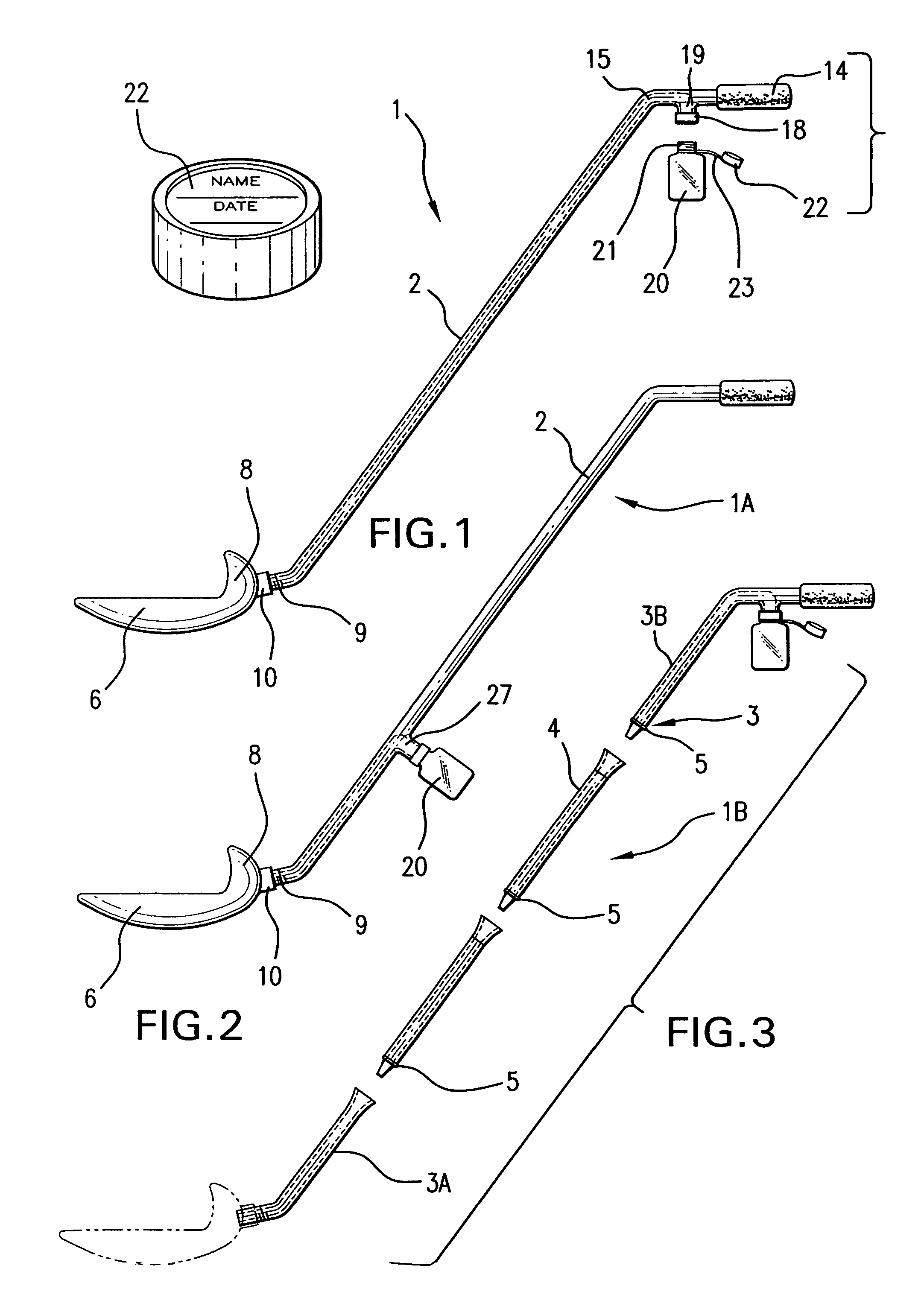Urine sample retrieval device
a retrieval device and urine technology, applied in the field of medical diagnostics, can solve the problems of invasive collection also poses a risk of new infections, and the field collection method, though simple and straightforward in concept, poses considerable challenges in execution, so as to avoid spooking a nervous pet, stealth and accurate manipulation of the tray, and pass the collection tray beneath.
- Summary
- Abstract
- Description
- Claims
- Application Information
AI Technical Summary
Benefits of technology
Problems solved by technology
Method used
Image
Examples
Embodiment Construction
[0041]As viewed in FIG. 1, the embodiment illustrated and described includes a sample collection tray (or catch basin) 6. Tray 6 may have a substantially rounded bottom or substantially flat bottom, understanding that a generally rounded basin will enhance tray capacity and limit spillage, while a flatter bottom affords a lower tray profile. The collection tray as presented in detail in FIGS. 4 and 5 may be relatively narrow at its leading end (i.e., the end to be strategically moved beneath the pet) and configured to expand toward its downstream trailing end or heel to form hood 8. This hood 8 collaborates with the trailing end of tray 6 to define a funnel.
[0042]At the trailing end of tray 6, and disposed at a relatively low point thereon, is a drain hole interconnected by connector 10 to a distal end of rod handle 2 which is at least partially hollow, for a purpose to become apparent. The interconnection of handle 2 and connector 10 may be pivotal (as, for example, a universal con...
PUM
 Login to View More
Login to View More Abstract
Description
Claims
Application Information
 Login to View More
Login to View More - R&D
- Intellectual Property
- Life Sciences
- Materials
- Tech Scout
- Unparalleled Data Quality
- Higher Quality Content
- 60% Fewer Hallucinations
Browse by: Latest US Patents, China's latest patents, Technical Efficacy Thesaurus, Application Domain, Technology Topic, Popular Technical Reports.
© 2025 PatSnap. All rights reserved.Legal|Privacy policy|Modern Slavery Act Transparency Statement|Sitemap|About US| Contact US: help@patsnap.com



